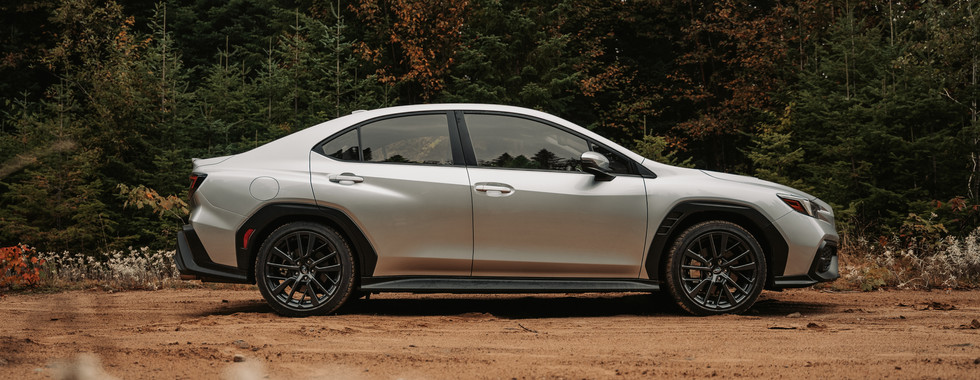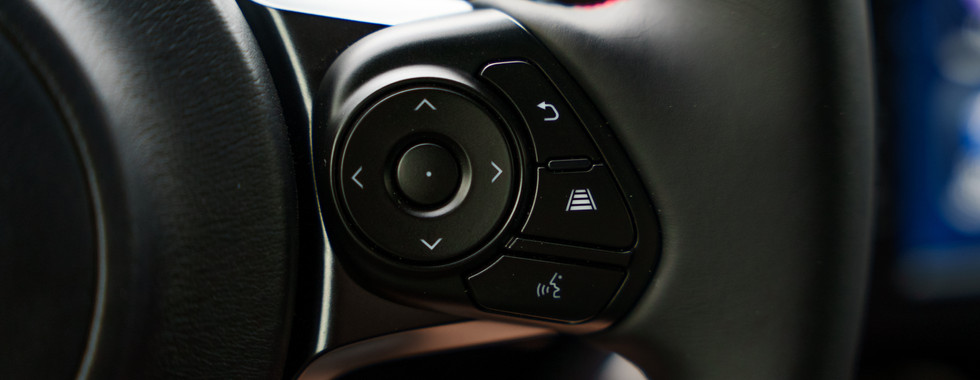Subaru BRZ vs WRX: Sport in different shapes
- Marc Gonzalez

- Nov 24, 2022
- 6 min read
In the past few weeks, we've had the chance to test drive both sport options offered by the Japanese automaker Subaru. We wanted to go in a different direction and put them together to showcase each vehicle's best attributes. Let's start with the price; the Subaru BRZ we tested cost $35,895, while the WRX cost $41,895. Both were manufactured at the Gunma plant in Japan.

Context
Let's start with a little bit of context on both vehicles: the Subaru BRZ is a collaboration with the biggest automaker in the world, Toyota, to create an affordable two-door sports car. They joined forces, and the public has been receptive, as they've sold over 120,000 of these over the last decade. Considering it is a niche market, it's catalyzed the sporty credentials of both brands.

As for the Subaru WRX, it's been in production for the last thirty years and has undergone a significant change for this second generation since Subaru went away from the well-known Impreza nameplate. A quick side note here, for select markets, there is a station wagon version called the WRX Sportwagon AWD tS that would make many jealous if imported on our shores. The NA version is also interesting, as we will get into it.
Styling
The Subaru BRZ has gone through a restyling that brings it back to its rally roots. The most considerable improvement is the taillights are closer to the front ones and do an excellent job of bringing the car together. On the sides, the aerodynamic shape is more pronounced than ever, and overall the designers deserve a thumbs up to keep what made this roadster a success in the first place.

On the other hand, the Subaru WRX has gone through a more extensive makeover while keeping the essence of the rally-oriented vehicle that has been present for the last thirty years. The grille has increased in size since the previous generation, but it doesn't necessarily look out of place; it was a delicate yet well-executed task. Keeping the headlights unit essentially unchanged was a wise decision. In the back, the trunk area is almost a complete departure from the previous generation. The taillights are sharper than ever, and the quad-exhaust pipes are more apparent; gone is the restrained look, and now it's all about style and vitality.

Interior
The BRZ is all about the driver; its main focus is the driving experience. The Japanese manufacturer kept the previous generation's steering wheel, which feels excellent handling and is much better than the standard found on every other Subaru model. New in this generation is a fully-digital gauge cluster which shows the basics. When you put the vehicle in Track mode, the display changes to make the tachometer even more prominent, so you know precisely when to shift to get the best performance out of this tiny bomb. As one can imagine from the outside, the car is low, and there isn't enough space inside. The front sports seats keep the occupants in place in curves; the red stitching is a nice touch. The rear seats don't have a headrest, which allows the driver an unobstructed view of the rear window. They are incredibly narrow and look like an afterthought. There are ISOFIX ports; however, you can only fit a car seat behind the passenger seat. While the trunk opening and space are relatively narrow, we have to keep in mind this isn't the vehicle you would get for the number of cubic feet of space. To recapitulate, don't fix what's not broken, and it's still one of the most driver-focused vehicles on the market.
On the other hand, the WRX is much closer to its relatives in the Subaru lineup. The steering wheel, gauge cluster and window switches, to name a few, are all shared with almost every other model and thus lose a little personality. The steering wheel is fine; the badging on the lower part is the only difference from the others. The same is true for the gauge cluster and screen; the G-meter indicator may be the only menu that doesn't appear on a regular Impreza. Although it's how they were able to offer this performance at such a low price, it still is a little disappointing. One highlight, though, is the seats; they balance the thin margin between the sporty seats and the family character behind the Impreza of the vehicle at the origin pretty well. The red stitchings are stylish and stitched on both front headrests. The difference in the interior room is immense when comparing these two vehicles, although this is what makes the WRX! The back seats are roomy enough to seat adults and easily install car seats thanks to the ISOFIX ports once. It's also possible to drop them to create a larger trunk. So the midsize-performance sedan is still a midsize-performance sedan, and that's the beauty of this setup.
Entertainment
These two vehicles had a different yet pretty similar infotainment system. In the coupe, you will find the 8-inch touchscreen found on most basic Subarus in 2022; since the space is limited inside, it was perfect for displaying all the information a BRZ driver would need. In the larger WRX, you will find a larger 11.6-inch touchscreen with more detailed information, combining information from the older entertainment system and some climate controls. That is a shame since the controls in the BRZ are much easier and quicker to use. While the sedan may offer much more clarity regarding the information displayed, the screen is so big that it can become distracting in this kind of use. The setup in the coupe, even though it looks less like a vertical iPad, is best adapted to a driver-oriented vehicle. The previous generation WRX had a similar screen, but Subaru moved away in the name of modernity. The upside is the sound system; the Harman Kardon system found in the 4-door significantly improves the musical experience. The Subaru BRZ has the edge overall in this aspect.

Driving
The Subaru BRZ is the Subaru model that procures the most feedback on the road. The numbers are pretty interesting: the power comes from a naturally aspirated BOXER 2.4L 4-cylinder engine that produces 228 hp and 184 lb-ft of torque and is sent to the wheels with a six-speed automatic transmission in our test model. Don't worry; the six-speed manual transmission is still available. Although the 0-100kph is 6.6 seconds, it still feels quite fun to floor the vehicle, even with the automatic transmission. It doesn't matter which transmission you get; this will be a fun vehicle regardless of your choice. What makes a difference is the short size and the fact it is a rear-wheel drive. Handling and cornering are excellent, and you feel connected to the road and curves ahead, thanks to the steering. The BRZ will feel right at home on a race track with lots of twists, and you may be easily able to pass some more powerful vehicles thanks to the excellent grip of the Michelin Pilot Sport 18-inch tires. Braking is quite impressive; even during spirited driving sessions, the brakes weren't fading, and they stopped precisely every time. As one can imagine, the suspension had to be sharper and more precise to contribute to the vehicle's sporty feel at the expense of a more comfortable ride, but every buyer in this class is willing to pay that price. The exhaust has a joyful sound; it comes through the engine bay with little soundproofing to hear the rumbling as closely as possible. The BRZ is a driver's playful car, regardless of which transmission, although the manual is a bonus.

On the other hand, the Subaru WRX feels more mature. Power comes from the same BOXER 4-cylinder, with an added turbo to improve the figure to 271 hp and 258 lb-ft of torque. Officially, the power is brought to the wheels with a CVT; the manufacturer calls it the Subaru Performance Transmission. You can choose a six-speed manual since Subaru also knows its customers need that option. On paper, the WRX is faster by half a second than the BRZ, but the drive is different and rightfully so since these two cars have different demographics.
In the coupe, you get the Fast & Furious vibe thanks to its low center of gravity and overall shape; the performance sedan feels fast, especially with the legendary symmetric all-wheel drive; the acceleration is more linear and predictable. The exhaust was also enjoyable, an excellent sound to go along with the essence of the vehicle. The downside is that the handling and cornering are a little less sharp, you aren't as low to the ground, and the standard steering wheel doesn't bring as much feedback as we'd hoped in this vehicle. The suspension works great and helps keep the car's balance when braking or turning hard. The WRX shines the most in the mud; it gives such confidence; no wonder it's one of the legends in the Rallye world. You can feel the years of fine-tuning the all-wheel drive system.

Final word
The story here is that both vehicles have a clear purpose and focus on different people. The Subaru BRZ is a joy to drive on a twisty road, and the Subaru WRX is enjoyable every day, especially on a Rallye-looking road. They each have their clear advantage; one is the low center of gravity and handling, and the other is an excellent sounding exhaust and peace of mind in challenging weather or terrain. We have a soft spot for the coupe, but we can't overstate the legend of the WRX.

Subaru has lent us this vehicle as a press vehicle. We have no affiliation with Subaru Canada. The above reflects our personal opinion.




















































































Comments